What I Buy and Why
Art and Design Go Hand in Hand for George Yabu and Glenn Pushelberg, Who Once Convinced Yayoi Kusama to Make Them a Pumpkin
A recent trip to Japan yielded a sculpture shaped like a 'volcanic cauliflower.'

A recent trip to Japan yielded a sculpture shaped like a 'volcanic cauliflower.'

Lee Carter

Canadian designers and life partners George Yabu and Glenn Pushelberg met at design school. Years lapsed before they crossed paths again, by chance, when they were each seeking studio space. After discovering common interests in philosophy and aesthetics, they decided to share a workspace. That led to the founding of Yabu Pushelberg, a design firm with offices in Toronto and Tribeca.
Since that fateful day in the early 1980s, the two have worked with some of the biggest names in hospitality and luxury, including the Four Seasons, Louis Vuitton, Tiffany & Co., and Barneys. While they concentrate on interiors, their 125-person team also designs landscapes, lighting, and graphics—and they are pushing into experience design. In addition, they author multiple furniture collections—as many as six—for a variety of manufacturers and showcase them each year at the mega-fair for design, the Salone del Mobile in Milan.
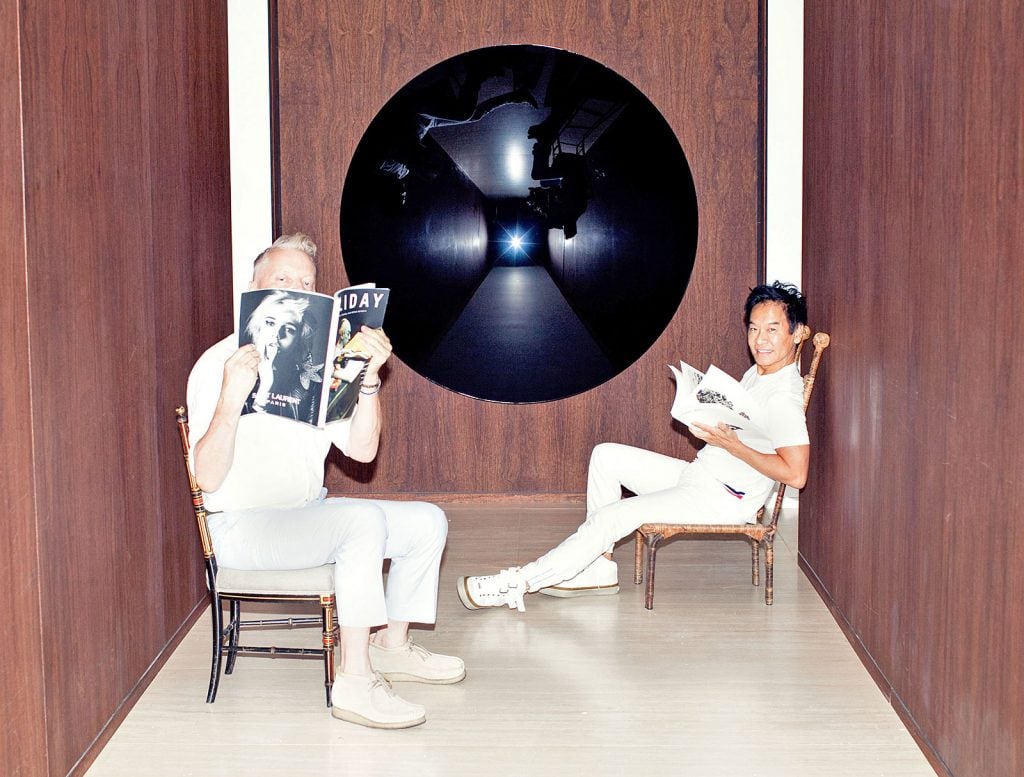
Glenn Pushelberg and George Yabu with Anish Kapoor’s Circular Lacquer Dish (Black) (2004). Courtesy of George Yabu and Glenn Pushelberg.
All the while, the couple has indulged a passion for collecting art, starting with photography—works by Diane Arbus, Nobuyoshi Araki, Robert Mapplethorpe, Thomas Ruff, and Philip-Lorca diCorcia line the staircase of their Toronto home (they also own homes in Manhattan and Amagansett, Long Island). The collection has grown to include several major works, including Yayoi Kusama’s My Heart 2013, followed by a pumpkin sculpture in 2016—one of the artist’s last personal commissions, they said.
Works by Yoshitomo Nara, Julian Opie, Anish Kapoor, and Dutch artist Eelco Brand have been added over time, and they fantasize about acquiring a Constantin Brancusi sculpture. For the time being, they’re focused on Indigenous and Aboriginal artists.
We caught up with the dynamic duo to see how they merge art and design in their professional and private lives.
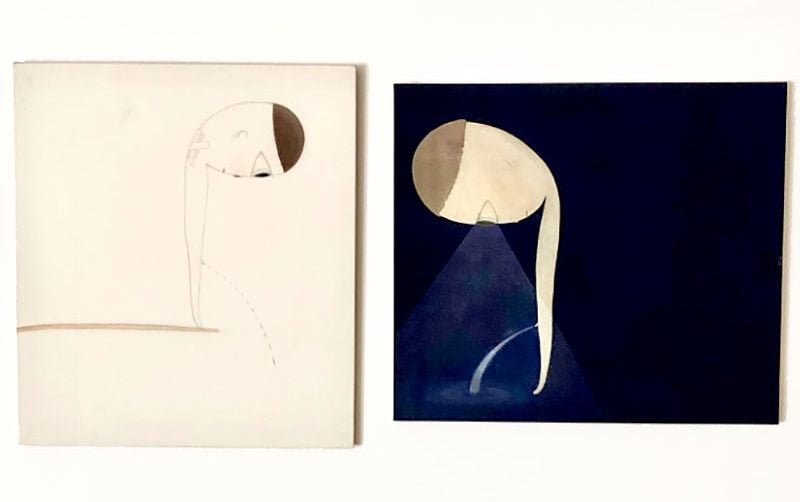
Yoshitomo Nara, Pee (2001) and Pee “Dead of Night” (2001). Courtesy of George Yabu and Glenn Pushelberg.
What was your first purchase?
GP: Many, many years ago, we met Tomio from Tomio Kamaya gallery in Tokyo. And he was showing us this lovely artist called Yoshitomo Nara, and we bought two ‘live’ paintings called Pee and Pee “Dead of Night” and two drawings from him. Many years later, of course, Nara became super-famous.
GY: What was unusual about those paintings was that he rarely uses the painting media of acrylic on canvas, so they’re very rare.
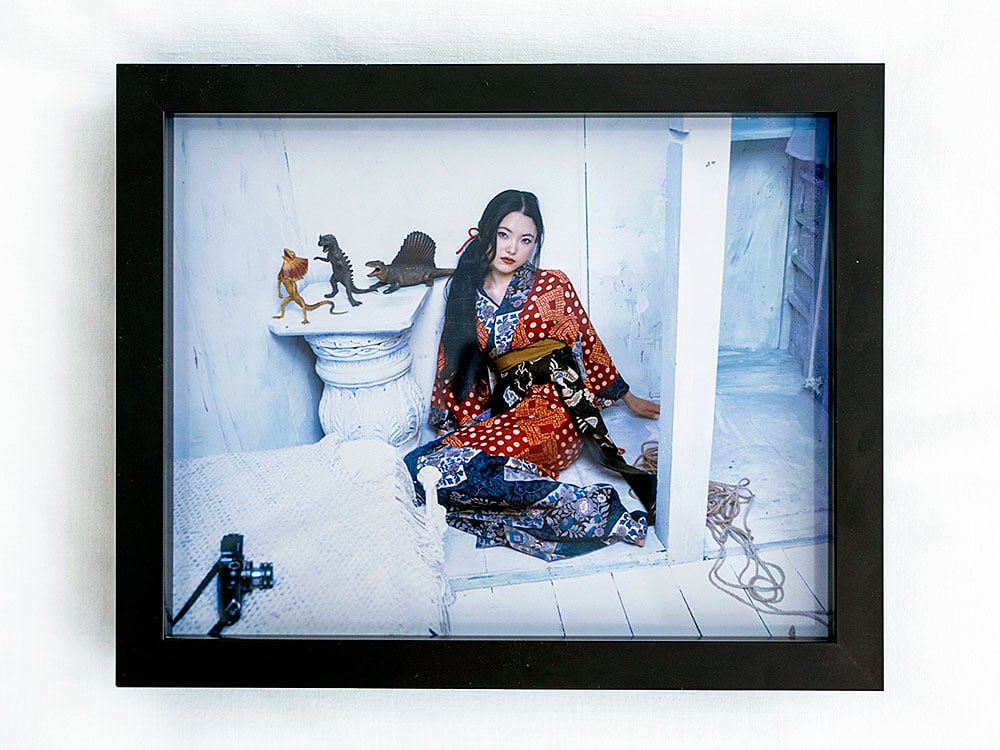
Nobuyoshi Araki, Kaori (2004). Courtesy of George Yabu and Glenn Pushelberg.
What was your most recent purchase?
GP: We were in Mexico City during the holiday period, and we went to Kurimanzutto gallery and bought a bunch of works from young artists, mostly Mexican and Cuban. We also bought a Nobuyoshi Araki, marking our third photograph by Araki, a Japanese artist who delves into bondage. We are fascinated by his work.
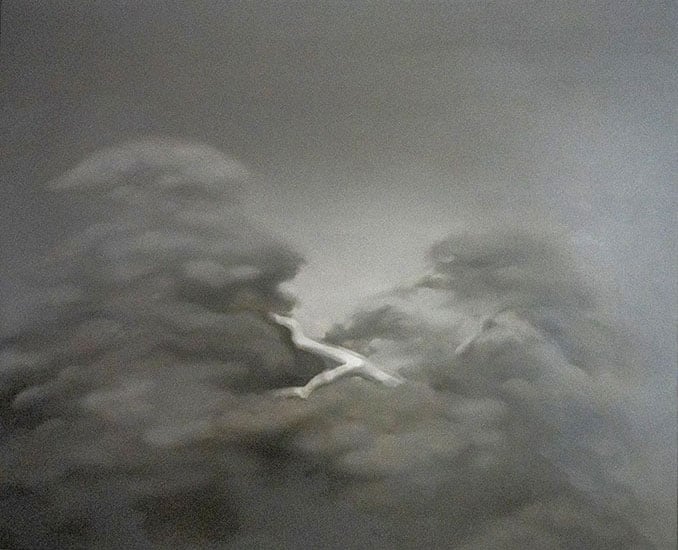
Shou Fan, Two Pine Trees. Courtesy of George Yabu and Glenn Pushelberg.
Tell us about a favorite work in your collection.
GP: It’s like asking who your favorite child is when you have children, they’re all wonderful in their own way. If we had to choose one, it would be Two Pine Trees, by Shou Fan.
GY: What is wonderful about the large canvas of Two Pine Trees is that it looks like the two pines are shaking from a very big thunderstorm. It creates the illusion that the trees are vibrating from the impact, the air pressure difference, signaling an incoming storm. It’s quite beautiful.
GP: Although figurative, it has an emotional depth that we enjoy.
GY: With Two Pine Trees, as Glenn said, it can be abstract as well. You have to really look for the pines within that composition.
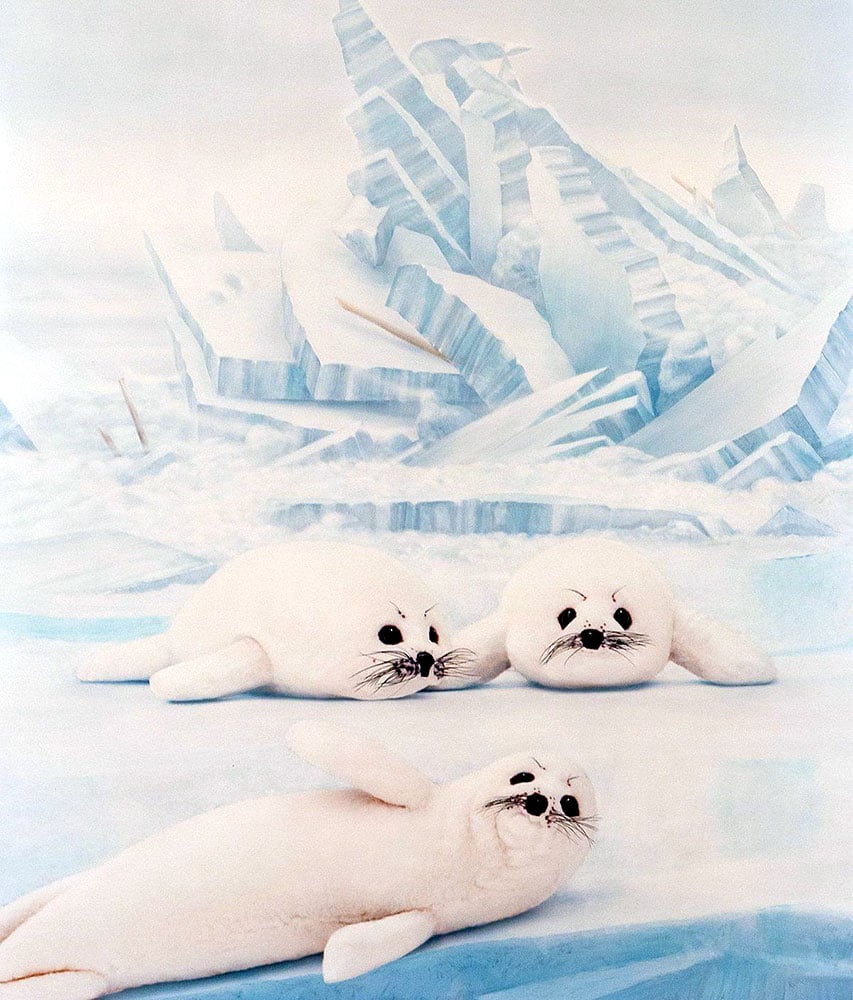
A work by AA Bronson. Courtesy of George Yabu and Glenn Pushelberg.
Which works or artists are you hoping to add to your collection this year?
To us, collecting art is very personal. It’s not about investing or a strategy around a bound collection—it’s just artists that we love. Recently we bought a piece from AA Bronson, who is part of the three-person collective General Idea. We always wanted a piece of their work. But we are drawn to new and emerging artists equally. Last year we were introduced to the work of an emerging Indigenous Canadian artist, Ooloosie Saila; we bought her work because we thought it was beautiful and poetic.
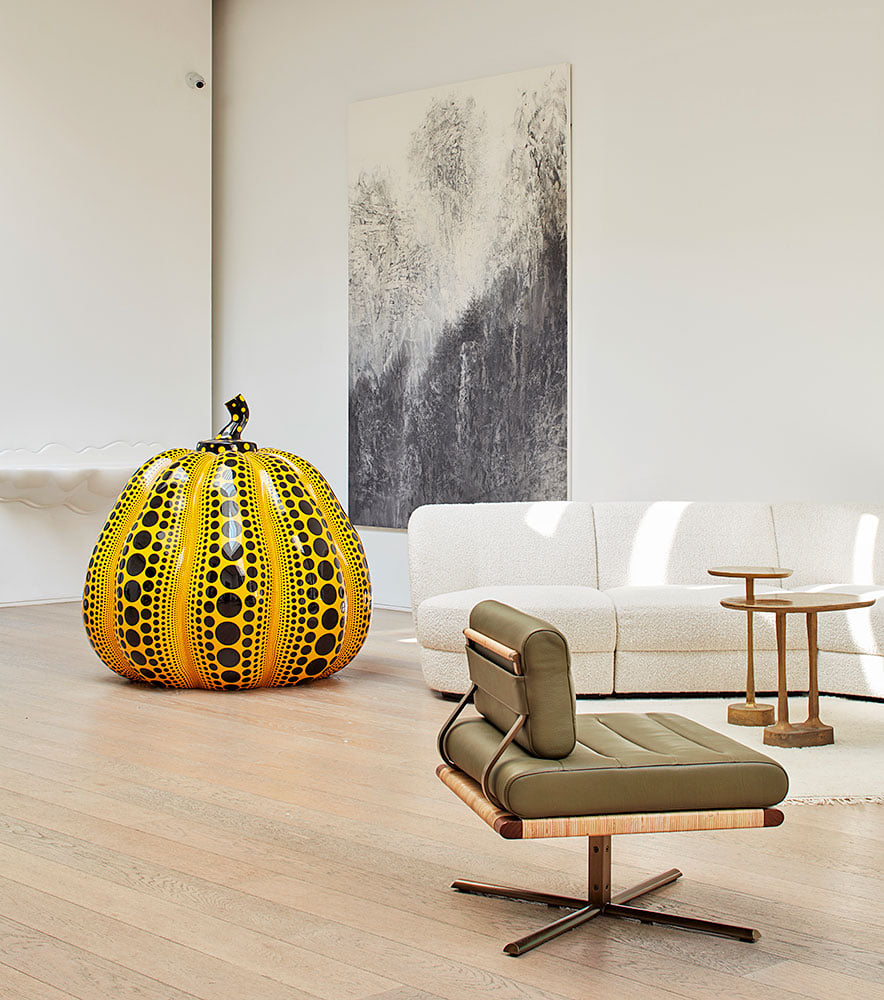
A Yayoi Kusama pumpkin sculpture. Courtesy of George Yabu and Glenn Pushelberg.
What is the most valuable work of art that you own?
GP: Depends on the day you ask us! I think one of our most jovial pieces people tend to admire is a Kusama pumpkin, which lives in our Toronto studio. How it got there is a funny story. Once, George attended a sit-down dinner to honor Yayoi Kusama…
GY: I met her and we had a connection. We bought a painting the next day and then we asked her for the pumpkin. It took her six months to decide that yes, she’d create one for us, and it was one of her last personal commissions.
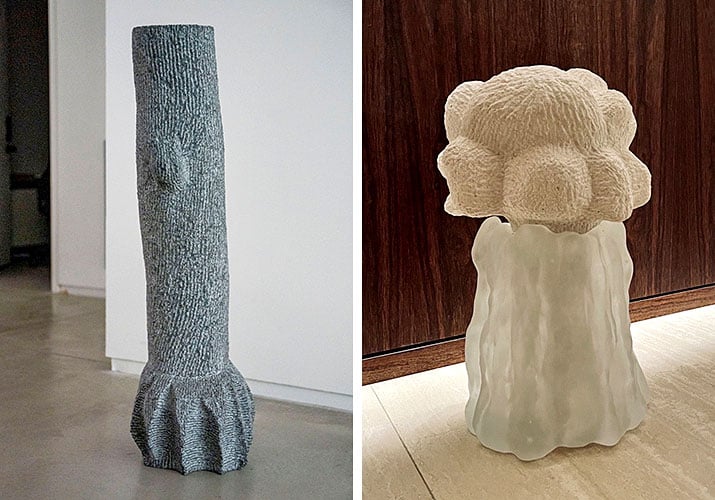
Two sculptures by Sachi Hasegawa. Courtesy of George Yabu and Glenn Pushelberg.
Where do you buy art most frequently?
GP: On the road. We were in Japan a few months ago and we went to the galleries on a Saturday and we bought these two eccentric-looking sculptures by a young Japanese artist, Sachi Hasegawa. One is a tree trunk-looking granite sculpture, and the other is made of glass and stone. It can only be described as looking like a “volcanic cauliflower.”
GY: Both are whimsical and unusual, which is the beauty of Japanese craftsmanship. They know how to work with that very difficult and challenging hard material.
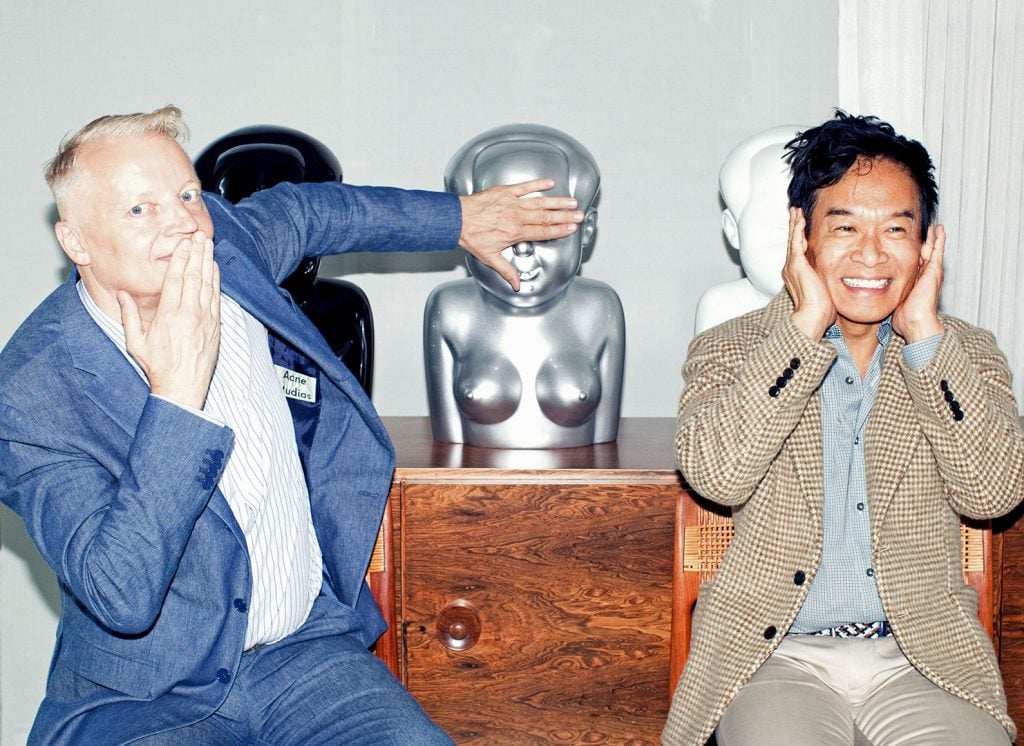
Glenn Pushelberg and George Yabu with Gao Brothers’s Miss Mao No. 1 (2006). Courtesy of Glenn Pushelberg and George Yabu.
Is there a work you regret purchasing?
GP: Years ago, we bought a collection of this artist/videographer’s works.
GY: We find him very interesting but we found the works to be a bit at the edge of societal norms and gruesome; we have it in a drawer.
What work do you have hanging above your sofa? What about in your bathroom?
GP: At our house on the beach, we have a water painting by an unknown artist, which is the counterpoint to looking at the ocean on the other side. There is a nice balance of reality and surrealism.
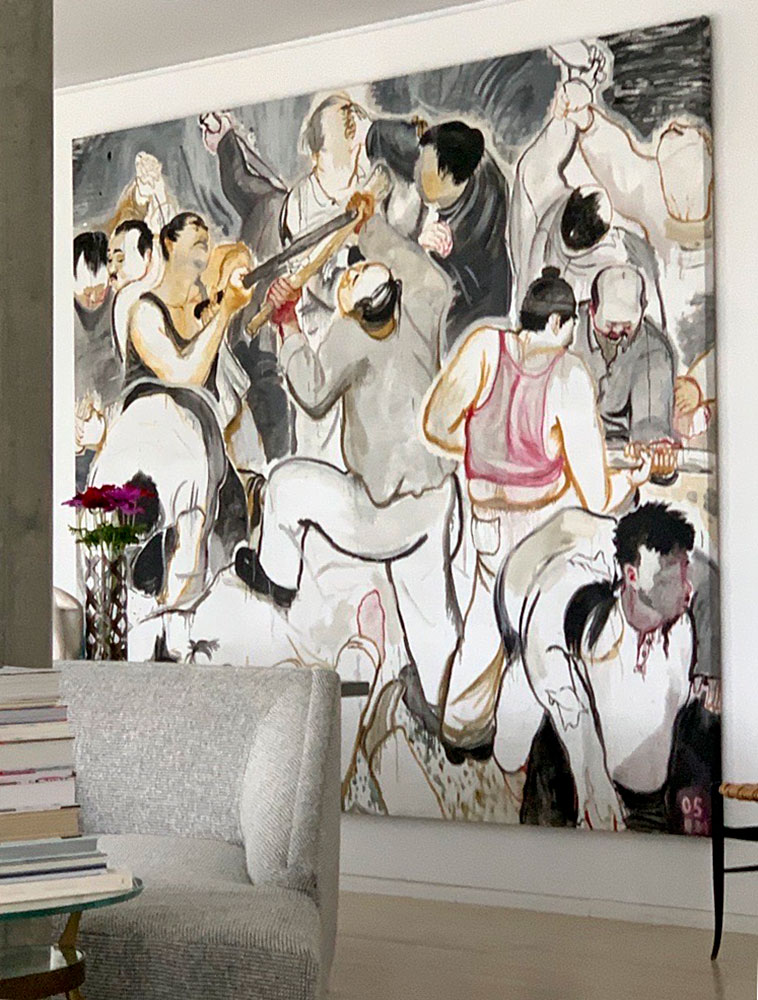
Painting by Zhang Enli. Courtesy of George Yabu and Glenn Pushelberg.
GY: In New York, we have a painting by Chinese artist Zhang Enli above our sofa. It used to be in our studio, but we realized it was the perfect centerpiece to our living room at home. It is a powerful painting about social justice at the time of the Maoist regime, depicting workers striking, but it has an incredible energy and emotion. In our third residence in Toronto, we have a sofa with a backdrop of this beautiful view of the ravine forest in the middle of downtown Toronto. We also have a piece by an Aboriginal artist that we cherish, which lives in our Toronto bathroom.
What is the most impractical work of art you own?
GY: Art is a pure form of expression, so nothing is practical or impractical.
GP: We have a Jim Campbell video artwork in the entryway of our home in New York, which is only impractical because it breaks, but it’s an ethereal soothing introduction to be welcomed home by. He designed this LED keyboard behind six inches of clear resin.
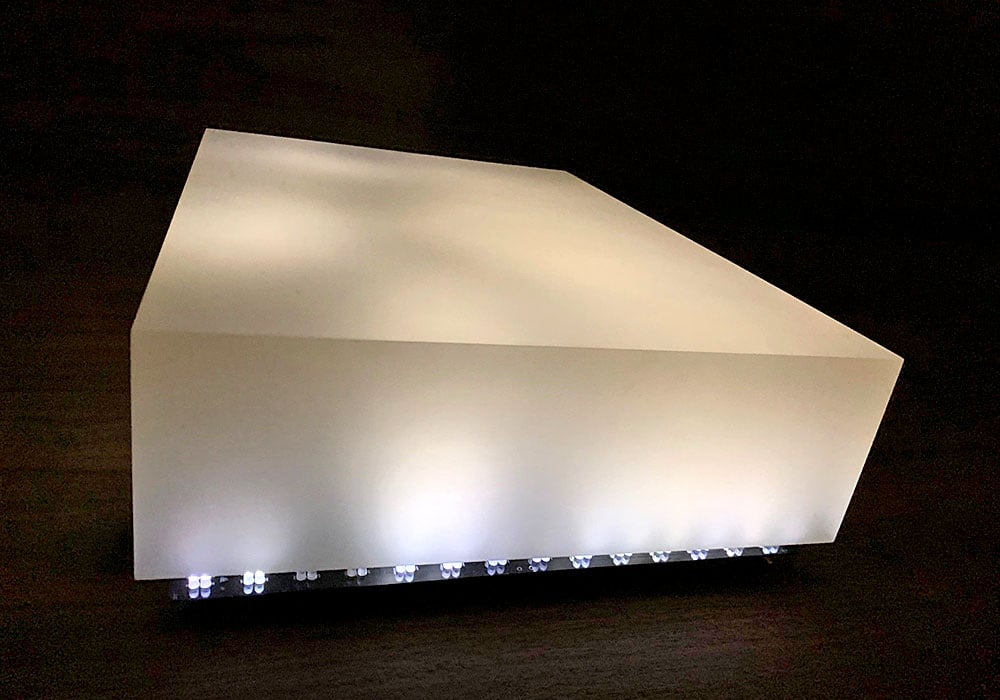
Video artwork by Jim Campbell. Courtesy of George Yabu and Glenn Pushelberg.
What work do you wish you had bought when you had the chance?
GP: We were at the Centre Pompidou in Paris. Last year there was a Cy Twombly exhibition, and we just fell in love with his big paintings.
GY: We could have bought one 15 years ago, but it was one of those “could’ve, would’ve, should’ve” moments. We were focusing on elevating our career paths and the mood of the paintings, which were very happy, did not align with what we were going through at the time. Even though we regret not buying it now.
GP: We learned not to invest but to buy what we gutturally love.
If you could steal one work of art without getting caught, what would it be?
GP and GY: A beautiful art sculpture by Brancusi.